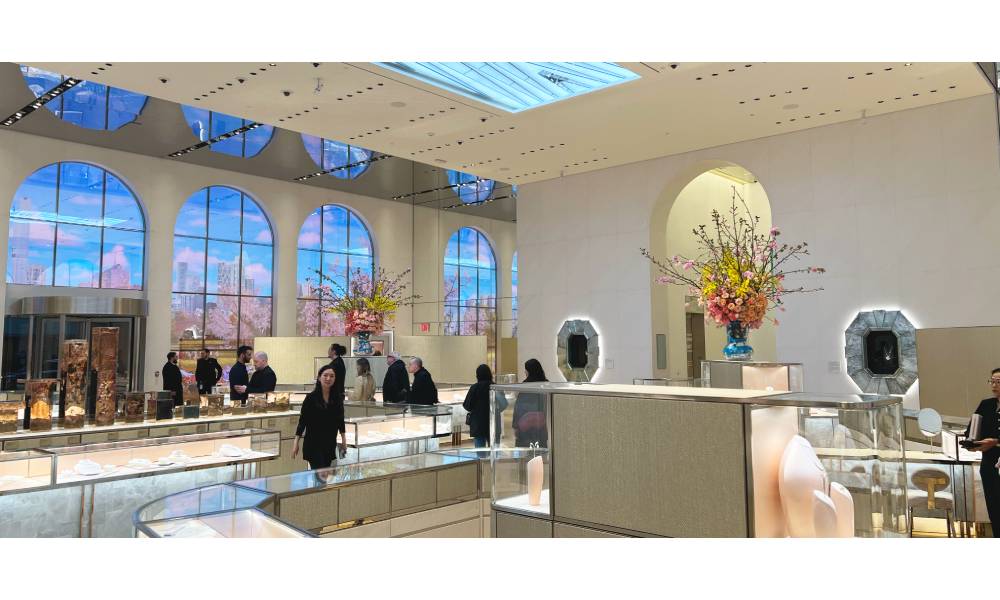Is a growing gap between rich and poor fuelling a surge in high-end jewellery? Paul Zimnisky, a leading diamond industry analyst, dives into the data and reveals how the wealthy are spending big on luxury stones, while demand for more affordable pieces softens.
A growing global wealth gap seems to be driving relative demand outperformance of highest-end diamonds and jewellery.
An expanding wealth delta has persisted for decades but notably accelerated during the pandemic years when government polices drove a surge in asset prices – punctuated with record-breaking economic stimulus measures.
For context, in the early-1990s, the richest 1% of Americans held 17% of total wealth in the U.S., the figure has since risen to 27%, according to U.S. Federal Reserve data. By contrast, “middle-class” American wealth has fallen from 37% to 27% over the same period. (In this case, “middle-class” is defined as income earners falling within the 20-80% range of Americans.)
America’s “top 1%” includes about 4 million people. America’s middle class is represented by over 200 million.
In general, large wealth disparity holds true on a broader global demographic basis as well. For instance, developed countries represent just 21% of the global population but hold 69% of the wealth, according to Oxfam, a UK-based non-profit.
Notably, up until the pandemic average incomes in the poorest 40% of countries in the world were growing at a faster relative rate (in percent terms helped by a low base) than global averages. However, even that trend starkly reversed in 2020, leading to the largest increase in income inequality between poor and wealthy nations in three decades.
Spending activity by diamond and jewellery consumers, and luxury consumers more generally, have tallied accordingly.
During an analyst call In May, Richemont, the parent of Cartier and Van Cleef Arpels, said that is has been increasing its marketing and promotion budget for “high jewellery events,” following continued strong performance in the category in recent quarters. While there is no formal industry definition of “high-jewellery,” it is colloquially understood to describe jewellery with price points around and above six-figures (in USD).
In July, LVMH, the parent of Tiffany & Co., said “we are embarking on a journey which is to increase progressively the average price of what we sell…not just by raising prices, but by selling more expensive items.” Also in July, Bloomberg reported that Tiffany is “trying to encourage staff” to sell more high-end jewellery with higher commissions incentives on items priced $75,000 and above. The story referenced “people familiar with the matter who were not authorised to speak publicly.”
At the same time, Tiffany has noted softness in more “aspirational” customer categories, i.e. lower-priced items – a common theme in the broader industry.

On the auction front, in May a 1.56-carat fancy-red diamond dubbed the “Argyle Phoenix” sold for $4.2 million at Phillips Geneva. On both an absolute and average-price-per-carat basis it was the most ever paid for a red diamond.
Last year, Tiffany acquired a lot of 35 Argyle pink and purple diamonds to leverage its position as the “premier purveyor of the world’s most coveted creations and exceptional diamonds.” While fancy pink and purple diamonds tend to be less valuable than reds, the most coveted Argyle pinks (those hand-picked for an exclusive annual tender) have been known to sell for in excess $1 million per carat – and on average they tend to sell for six-figures.
As another anecdote, despite a sluggish global economic backdrop, in August, high-end sports car manufacturer Ferrari, raised sales guidance for calendar 2024 driven in part by better than anticipated demand from U.S. consumers. Globally, the average price of a Ferrari is $340,000; the company delivered almost 3,500 units in Q2, which was up 3% year-over-year.
Paul Zimnisky, CFA is an independent diamond industry analyst and consultant based in the New York metro area. For regular in-depth analysis and forecasts of the diamond industry please consider subscribing to his State of the Diamond Market, a leading monthly industry report; an index of previous editions can be found here. Also, listen to the Paul Zimnisky Diamond Analytics Podcast on Spotify or Apple Podcasts for exclusive full-length conversations with special guests from the gem and jewelry industry. Paul is a graduate of the University of Maryland’s Robert H. Smith School of Business with a B.S. in finance and he is a CFA charterholder. He can be reached at paul@paulzimnisky.com and followed on X @paulzimnisky.
Paul will be giving a presentation on diamond fundamentals at a Bharat Diamond Bourse event on October 11, 2024 in Mumbai, India. He will also be presenting at INHORGENTA on February 22, 2025 in Munich, Germany.
Disclosure: At the time of writing Paul Zimnisky held a long equity position in Brilliant Earth Group and Newmont Corp. Paul is an independent board member of Lipari Diamond Mines, a privately-held Canadian company with an active mine in Brazil and a development-stage asset in Angola. Please read full disclosure at www.paulzimnisky.com

